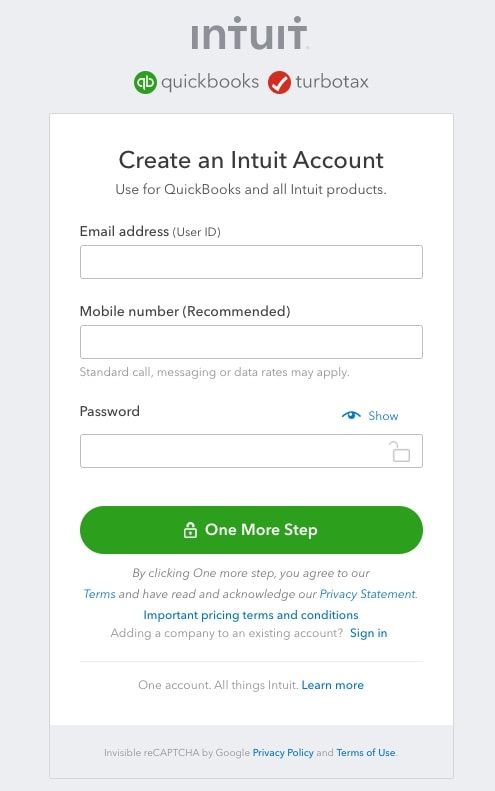Turn on suggestions
Auto-suggest helps you quickly narrow down your search results by suggesting possible matches as you type.
Showing results for
Hello, Im quite new to Quickbooks and am just getting setup etc. I have an issue that i cant seem to figure out in that i am currently Full Time employed and also have a self employed side business, that i am using quickbooks for. How do i load my PAYE earnings into quickbooks so that i get an accurate reflection of how much tax i am owe/due in regards to my allowances being already used up for my full time PAYE employment?
Maybe im missing something, but there doesnt seem to be an easy way to do this?!
Solved! Go to Solution.
Hello Community Users! We wanted to add some clarification on the correct process for accounting for P45 income within Self Employed. It is correct you would record it in the tax profile however it would be the personal allowance section you would adjust as the PAYE would affect how much allowance you have left. If you have used up the allowance you can amend the figure in that personal allowance section to zero. This will then mean the income tax is calculated correctly. We've amended the previous post to have the correct process. Any questions at all please ask them here. Thanks
I want to begin this thread by thanking you for giving QuickBooks Self-Employed (QBSE) a try, @mike585.
Please know that these are the following main benefits of using QBSE:
Right now, QBSE doesn't calculate PAYE earnings. Although you can enter it on the Tax Profile page.
Here's how to complete the process:
For your visual reference for the steps I've provided above, check below screenshots:
In case you need tips in the future, visit our QuickBooks Help Articles site.
You can get back to me anytime you have additional questions in QuickBooks by posting your response below. I'll do whatever it takes to ensure your concerns are addressed.
This is a detailed reply but in my opinion doesn't seem to answer the question. I have the same question.
I've already received my personal allowance within my PAYE employment. I don't need to calculate tax on that. However, any additional earnings I make in self employed are taxable from my first penny of additional earnings because I've already had my tax free allowance in my PAYE employment.
I have put in my estimated (actual) PAYE earnings from my P60 document for tax year 2019/2020. However, I wonder if I need to change my tax free amount on quickbooks self employed from £12,500 to £0 for it to automatically calculate the tax I will owe?
Any advice welcomed from people who are both PAYE & self employed and use quickbooks to calculate their self employed tax. Thanks
Thanks for joining this conversation, @GoodThinkingPsychological.
You can follow the steps shared by my colleague above to enter the PAYE earnings since QuickBooks Self-Employed (QBSE) doesn't the option to automatically calculate it. However, I highly suggest consulting with your tax adviser so you'll be guided in selecting the proper categories for your transactions and earnings.
Just in case, I'll add these articles for future reference:
Please leave a comment below if you have any other concerns or questions, and I'll get back to you right away. I'm always here to help. Have a wonderful day!
Hi ! I am in the exact same situation. Did you manage to overcome this? If so, please let me know how i can do the same. Thanks !
Let me reiterate what the other previous agent told us, useralixfmccartney.
As mentioned by @MirriamM, QBSE doesn't calculate PAYE earnings, but you can enter it on the Tax Profile page. To do this, please check out the steps below,
Although, I know how you want to load your PAYE earnings into Quickbooks to know the accurate tax you owe or due, I'll make sure to take note of this.
In the meantime, you can check out this article for more information: Three Tax Calculations To Help You At Tax Time.
Also, for your reference, you can visit this article for your guide: QuickBooks Self-Employed Overview.
Please let me know if you have any other concerns about PAYE earnings. I'm here to further assist you if there's anything else you want us to help with.
Hello Community Users! We wanted to add some clarification on the correct process for accounting for P45 income within Self Employed. It is correct you would record it in the tax profile however it would be the personal allowance section you would adjust as the PAYE would affect how much allowance you have left. If you have used up the allowance you can amend the figure in that personal allowance section to zero. This will then mean the income tax is calculated correctly. We've amended the previous post to have the correct process. Any questions at all please ask them here. Thanks

You have clicked a link to a site outside of the QuickBooks or ProFile Communities. By clicking "Continue", you will leave the community and be taken to that site instead.
